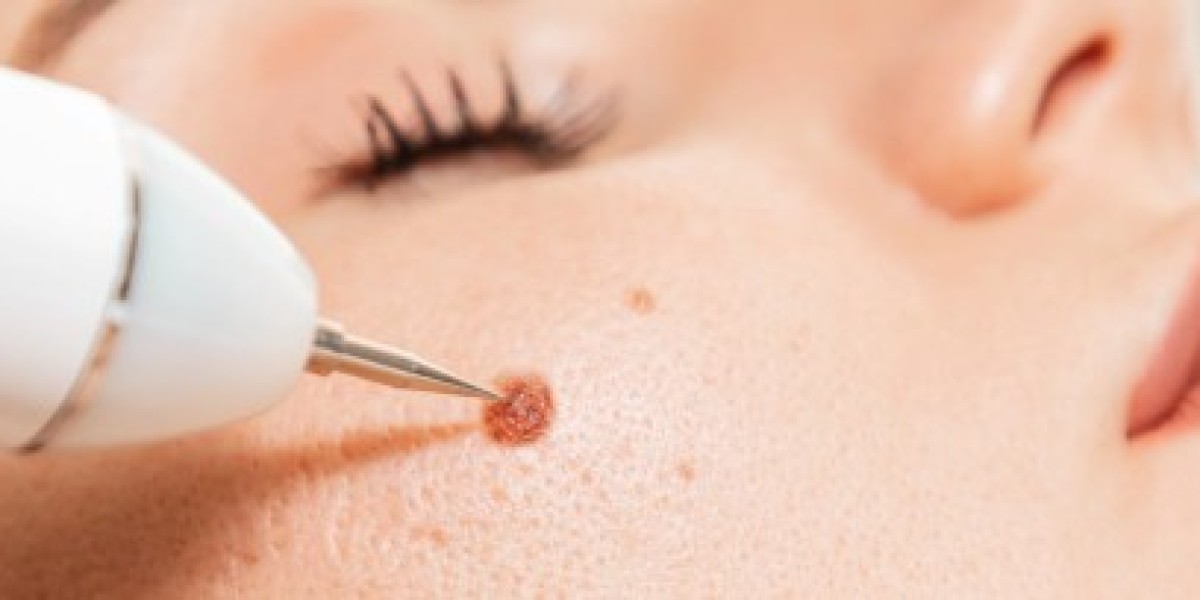Skin tags, or acrochordons, are small, benign growths that often appear on areas of the skin where friction occurs, such as the neck, armpits, and groin. While these growths are generally harmless, they can be a cosmetic concern for many individuals. Fortunately, there are various skin tag removal treatments(علاج إزالة علامات الجلد)available, each with its own set of benefits and considerations. This comprehensive guide will explore the different methods for removing skin tags, helping you choose the best treatment option for your needs.
Understanding Skin Tags
What Are Skin Tags?
Skin tags are small, soft, and fleshy outgrowths that usually range from a few millimeters to a centimeter in size. They are composed of collagen fibers and blood vessels encased in skin. Although they are generally harmless, they can be bothersome or unsightly, leading many people to seek removal options.
Common Locations for Skin Tags
Skin tags commonly appear in areas where the skin rubs against itself or other surfaces. These areas include:
- Neck: Often found around the collar area.
- Armpits: Frequently occur where the skin folds.
- Groin: Typically found where the thigh meets the torso.
- Eyelids: Can appear around the eyes.
Types of Skin Tag Removal Treatments
When considering a skin tag removal treatment, it’s important to understand the various options available. Each method has its advantages, and the best choice depends on factors such as the size and location of the skin tag, as well as personal preferences.
1. Cryotherapy
Cryotherapy involves freezing the skin tag with liquid nitrogen, causing it to fall off after a few days. This method is effective for many people, and it’s commonly used in dermatological settings.
Advantages
- Quick Procedure: The removal process is relatively fast.
- Minimal Scarring: Generally results in minimal scarring if performed correctly.
Considerations
- Multiple Sessions: Larger or multiple skin tags may require more than one session.
- Temporary Discomfort: Some people experience a brief period of discomfort during and after the procedure.
2. Electrosurgery
Electrosurgery uses a high-frequency electrical current to burn off the skin tag. This method is precise and can be performed in a dermatological office.
Advantages
- Precision: Allows for precise removal of the skin tag.
- Reduced Risk of Infection: The electrical current helps to cauterize the area, reducing the risk of infection.
Considerations
- Pain: The procedure may cause some discomfort, though it is usually manageable.
- Healing Time: It may take a few weeks for the skin to fully heal.
3. Excision
Excision involves cutting the skin tag off with a sterile surgical instrument. This method is often used for larger skin tags or those located in sensitive areas.
Advantages
- Effective for Large Tags: Suitable for removing larger or more stubborn skin tags.
- Immediate Results: Provides immediate results with one procedure.
Considerations
- Risk of Bleeding: There is a small risk of bleeding, especially if the skin tag is large.
- Scarring: May result in a small scar depending on the size and location of the skin tag.
4. Over-the-Counter Treatments
There are various over-the-counter treatments available for skin tag removal. These products typically contain ingredients that dry out the skin tag, causing it to fall off over time.
Advantages
- Convenience: Can be used at home without the need for professional intervention.
- Cost-Effective: Generally less expensive than professional treatments.
Considerations
- Effectiveness: Results may vary, and it may take several weeks to see improvement.
- Safety: It’s important to follow instructions carefully to avoid skin irritation.
5. Natural Remedies
Some individuals opt for natural remedies to remove skin tags, such as applying apple cider vinegar or tea tree oil. These methods are based on anecdotal evidence and have varying degrees of effectiveness.
Advantages
- Natural Approach: Uses natural ingredients that are less likely to cause adverse reactions.
- Affordable: Often less expensive than other treatment options.
Considerations
- Variable Results: Effectiveness can vary greatly from person to person.
- Time-Consuming: Natural remedies may take longer to produce results compared to professional treatments.
Factors to Consider When Choosing a Treatment
When selecting a skin tag removal treatment, it’s important to consider several factors to ensure you choose the best option for your needs.
Size and Location of the Skin Tag
The size and location of the skin tag can impact which treatment method is most suitable. Larger skin tags or those in sensitive areas may require more precise or professional removal methods.
Personal Preferences and Pain Tolerance
Different treatments come with varying levels of discomfort and recovery time. Consider your own pain tolerance and preferences when choosing a treatment method.
Cost and Accessibility
Some treatments may be more expensive or less accessible than others. Over-the-counter treatments and natural remedies are generally more affordable, while professional procedures may involve higher costs.
Potential Risks and Side Effects
Each treatment method has its potential risks and side effects. It’s important to weigh these against the benefits to make an informed decision. Consult with a healthcare professional if you have any concerns.
Aftercare and Recovery
Regardless of the treatment method chosen, proper aftercare is essential for ensuring optimal healing and minimizing the risk of complications.
General Aftercare Tips
- Keep the Area Clean: Gently clean the area with mild soap and water.
- Avoid Irritation: Avoid scratching or picking at the treated area.
- Follow Instructions: Adhere to any specific aftercare instructions provided by your healthcare provider or product manufacturer.
When to Seek Professional Help
If you experience excessive pain, bleeding, or signs of infection (such as increased redness, swelling, or discharge), seek professional medical advice promptly.
Conclusion
Choosing the best skin tag removal treatment depends on various factors including the size and location of the skin tag, personal preferences, and budget. Whether you opt for a professional procedure or an over-the-counter solution, understanding the available options and their potential risks and benefits will help you make an informed decision.









